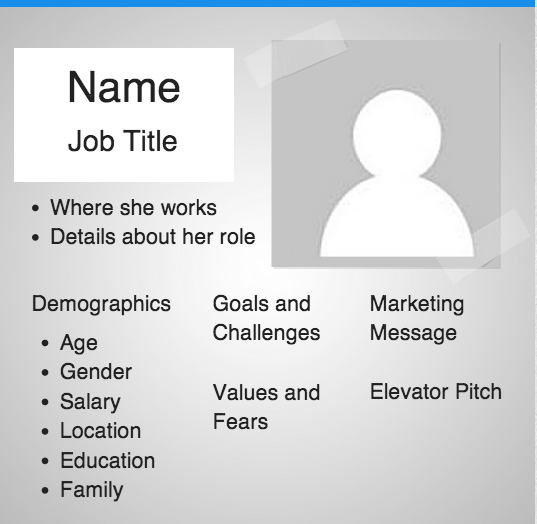Jacklyn RuthDigital Strategies Intern for the North American Division When creating and executing a social media campaign, think of who you are speaking to and how to best convey that message to different audience groups. We do this in everyday conversations without even knowing it. It is natural to speak differently to a child than to an adult. There is a difference in word usage and tone of voice. Children may need to hear something simplified, while an adult can understand more abstract ideas. The same concept applies to social media. When communicating to social media audiences, visualize actual people--their interests, culture, wants, needs, and expectations--to refine your voice. Depending on what is being promoted, you will create unique people and personas to represent different target groups. For example, the Society of Adventist Communicators Conference is promoted to and attended by students, teachers, and working professionals. Each target group has different reasons for attending the conference that range from continuing education to networking. Therefore, you would create personas representing students, teachers, and professionals identifying their specific wants and needs. Determining your audience personas can act as a guide to creating content that will be the most relevant and useful to your various audience groups. According to The Guardian, personas can be simply defined as: “A fictional character that communicates the primary characteristics or a group or segment of your audience and takes into consideration needs, demographics, motivations, and environments.” This is the kind of information you will want for each persona: (Photo from: https://blog.bufferapp.com/marketing-personas-beginners-guide) Some of this information can be found in your Google Analytics account. There you can find information on audience age, gender, salary, and location most of your audience is coming from. Google Analytics can also give you the interests of most of your audience. Learn more about Google Analytics. This information is key in creating your personas. You can also glean consumer information from your social media insights, and even one-on-one interviews. You can learn a lot from people who are part of your target audience that you engage with directly. The best personas combine both quantitative and qualitative information. This exercise is about putting yourself in the consumers’ shoes. Get to know what they want so you can meet their needs effectively. Social media is about connecting people with people to create a collective story or conversation. Understanding your audience is vital to bridging the gap and building meaningful relationships that result in something to enjoy in the real world. After you have finished your research, begin creating your personas. Here is an example of what a detailed social media persona might look like: (Photo pulled from: https://blog.bufferapp.com/marketing-personas-beginners-guide) Now, when applying this idea to Adventist events, such as Pathway to Health, (a ministry that provides entirely free, mobile, multi-specialty clinics that offer medical, surgical, dental, and eye care, along with other critical services), you can modify the example we have above. For instance, when promoting Pathway to Health, we must consider who will be coming, such as the under insured, struggling families, and the homeless, and who will be volunteering to help, such as: doctors, local volunteers, and pastors. Below is an outline of one person who might want to volunteer if the right information was put in front of them. You can even add a fake picture of them if you so desire. Name: Pastor Aubrey Who: A local youth pastor looking for a way to get church and kids involved in service. Age: 29 Yearly revenue: $30,000 Goals and challenges: Goal to get church involved in the community. Challenge is can’t find a way to get involved. Interests: Volunteering, church, youth ministry, service, community events, and hiking. Promotion media: church networks, social media, local conferences Message: We need everyone at Pathway to Health! Medical and non-medical volunteers to serve the needy in the community. Show the love of Christ through compassion. Knowing this information, how are you going to word a social media post to get them to help? You could emphasize the need for volunteers (even if they don’t have any medical experience) and what things are needed.
This tactic serves two purposes: First, it gets the creators to get into character. Second, it can help you find previously undetected tactical opportunities to promote your product, service, or institution. In summary, social media personas are developed based on your target audience. The key is finding out what those people want and need; the rest is simply compiling those qualities into a made-up person. As a church, we need to constantly find ways to reach our audience for the kingdom in the best, most efficient way possible. And social media personas help us step into other’s shoes so we can better understand them. Don’t forget to tag us at #DigitalEvangelism as you develop your creative personas. 8/31/2017 12:00:26 pm
Hi Jacklyn, great article on buyer persona. I work as a marketing automation manager and have a blog ab sabbath school. I'm definitely incorporating the persona concept as a guide to all my marketing efforts, both at work (I work for glidewelldental.com) and at the church.
Cyril Millett
10/1/2020 10:03:01 am
Hi John, are you still blogging about SS? If so, is your focus Adult SS, youth, etc.? 5/4/2023 02:57:16 am
Thanks for sharing this post. This is so interesting! Comments are closed.
|
Archives
August 2020
Categories
All
|
- Home
- BLOG
-
RESOURCES
-
RESOURCE MENU
>
- ADVENTIST IDENTITY GUIDELINES
- BIG DATA RESOURCES
- BRANDING, IMAGE & DESIGN RESOURCES
- CHURCH/MINISTRY SPECIFIC RESOURCES
- COPYRIGHT & TRADEMARK BASICS
- COURSES
- EMAIL RESOURCES
- GUIDANCE FOR HIRING SOCIAL MEDIA POSITIONS
- PODCASTS
- REPORTS & CASE STUDIES
- SOCIAL MEDIA RESOURCES
- (SOCIAL) VIDEO RESOURCES >
- TEXTING 4 CHURCHES
- TRACKING & ANALTYICS
- WATCH VIDEOS & TUTORIALS
- WEBSITE TIPS
- SOCIAL MEDIA GUIDELINES
-
RESOURCE MENU
>
- SEO
- Digital Discipleship & Evangelism
- COVID-19 RESOURCES
- eNEWSLETTER





 RSS Feed
RSS Feed